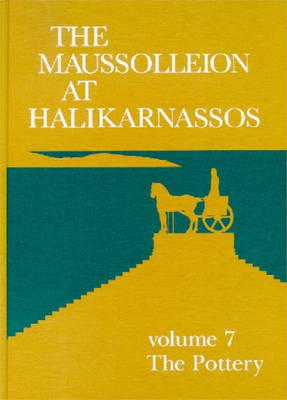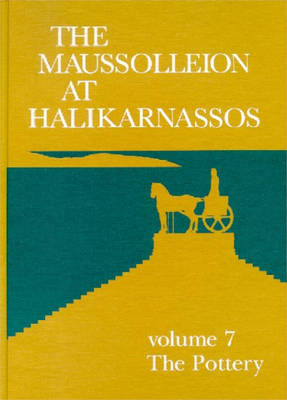
- Afhalen na 1 uur in een winkel met voorraad
- Gratis thuislevering in België vanaf € 30
- Ruim aanbod met 7 miljoen producten
- Afhalen na 1 uur in een winkel met voorraad
- Gratis thuislevering in België vanaf € 30
- Ruim aanbod met 7 miljoen producten
Zoeken
The Maussolleion at Halikarnassos. Reports of the Danish Archaeological Expedition to Bodrum
7 the Pottery
Leif Erik Vaag, Vinnie Norskov, John Lund
€ 79,95
+ 159 punten
Omschrijving
Raised to honour Maussolos, a Persian satrap of the 4th century BC, the Maussolleion in Halikarnassos was renowned throughout the ancient world as one of its Seven Wonders. By 1522 the building had been completely torn down and reused to fortify a nearby castle. Little else was known of the ancient monument until 1857, when C.T. Newton rediscovered the Maussolleion site. He removed what he could find of its sculptures - the source of the monument's original fame - to the British Museum, but while he answered some basic questions of structure, many were left unresolved, and his excavations jumbled much of the remaining materials. The third major contribution to our understanding of the great mausoleum comes from the Danish excavations led by Kristian Jeppesen from 1966 to 1977. The results of these digs are analysed in The Maussolleion at Halikarnassos. Vol. 7, The Pottery Finally, Volume 7 is a study of selected ceramic finds from the Maussolleion site and the first major publication on Karian pottery since 1965. From a body of 120,000 items, the authors have emphasized in situ contexts related to the construction of the Maussolleion, and representative items from the large body of Hellenistic material.
Specificaties
Betrokkenen
- Auteur(s):
- Uitgeverij:
Inhoud
- Aantal bladzijden:
- 331
- Taal:
- Engels
- Reeks:
- Reeksnummer:
- nr. 15
Eigenschappen
- Productcode (EAN):
- 9788788415179
- Verschijningsdatum:
- 24/01/2003
- Uitvoering:
- Hardcover
- Formaat:
- Genaaid
- Afmetingen:
- 216 mm x 308 mm
- Gewicht:
- 1573 g

Alleen bij Standaard Boekhandel
+ 159 punten op je klantenkaart van Standaard Boekhandel
Beoordelingen
We publiceren alleen reviews die voldoen aan de voorwaarden voor reviews. Bekijk onze voorwaarden voor reviews.








